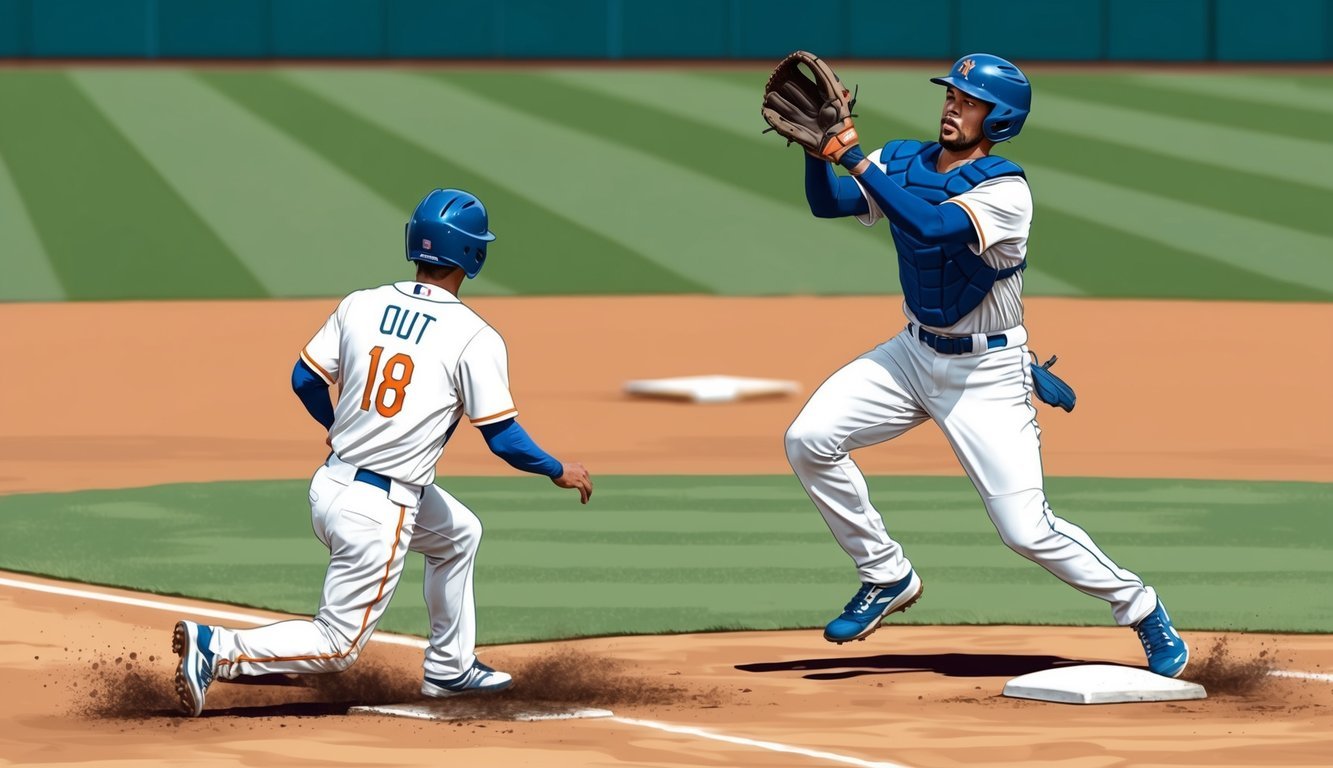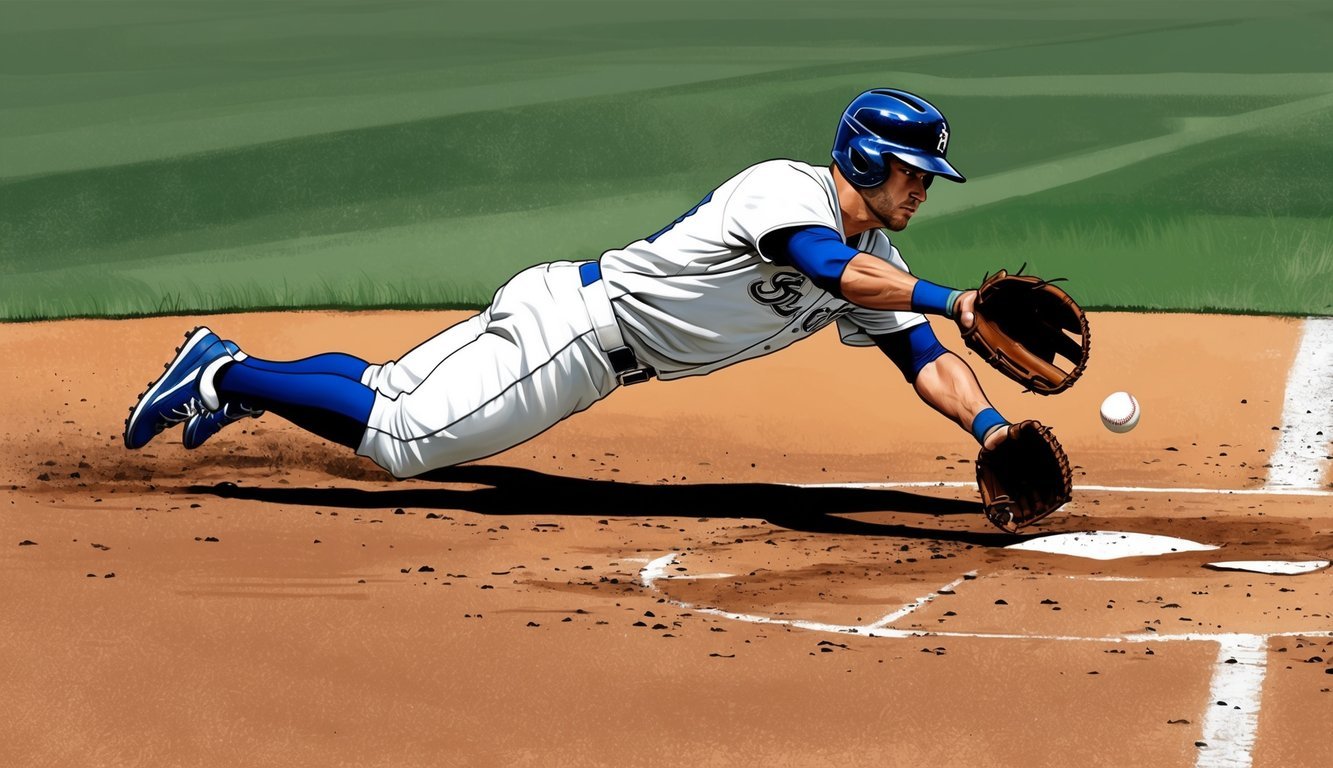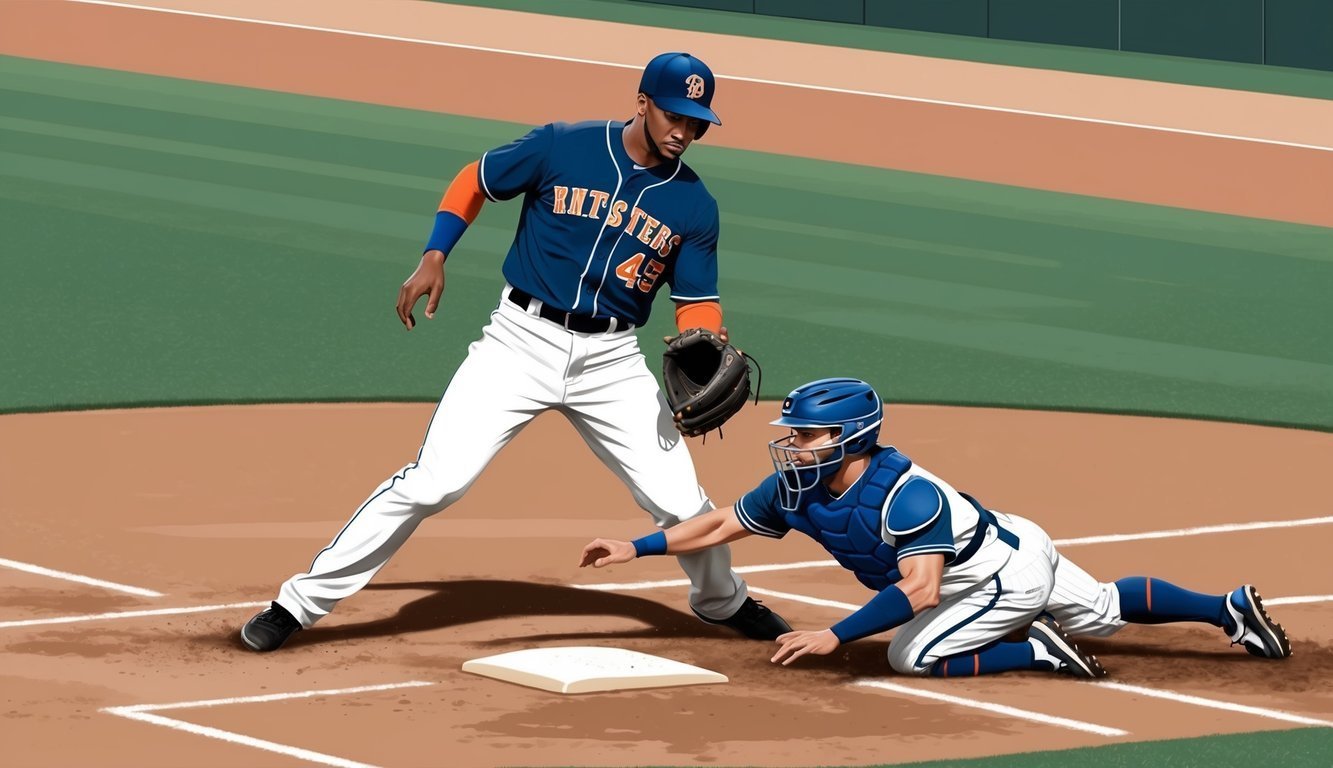Baseball is a game of statistics, and one of the most fundamental defensive metrics is the putout.
Every time a fielder retires a batter or baserunner, they earn a putout. A fielder can make a putout by catching a fly ball, tagging a runner, stepping on a base for a force out, or catching a third strike.
Putouts are essential for tracking defensive performance and completing the accounting of each game.
First basemen and catchers tend to accumulate the most putouts due to their positions, but outfielders can rack them up by catching fly balls.
Pitchers rarely record putouts unless they field a bunt or catch a pop-up.
Understanding putouts can enhance a fan’s appreciation of the game.
They offer insight into a player’s defensive involvement and can highlight exceptional fielding performances.
While not as glamorous as other statistics, putouts are a crucial part of baseball’s rich tapestry of numbers and provide a window into the defensive side of America’s pastime.
Basics of Put Outs in Baseball
Put outs are fundamental defensive plays in baseball that end an offensive player’s time on base.
They involve quick thinking and skillful execution by fielders to record outs and keep the opposing team from scoring.
What Is a Put Out?
A put out (PO) occurs when a fielder directly causes a batter or baserunner to be called out.
This can happen in several ways:
- Catching a fly ball before it hits the ground
- Tagging a runner with the ball while they’re off base
- Touching first base while holding the ball before the batter reaches it
- Catching a third strike (for catchers)
Put outs are crucial defensive statistics that reflect a player’s ability to finish plays and record outs.
They’re especially common for first basemen, catchers, and outfielders.
The Role of the Fielder
Fielders play a vital role in executing put outs.
Each defensive position has unique opportunities:
- First basemen often record put outs by catching throws from infielders
- Catchers get put outs on strikeouts and pop flies
- Outfielders make put outs by catching fly balls
- Infielders can tag runners or force outs at bases
Skilled fielders position themselves well, react quickly, and make accurate plays to secure put outs.
Good communication and teamwork are essential, as fielders often work together to complete these defensive plays.
The Putout Process
A putout in baseball is the defensive act of recording an out.
It involves various methods depending on the game situation and player positions.
Catching the Ball
Catching the ball is a fundamental way to record a putout.
Outfielders snag fly balls hit into their territory, while infielders handle line drives and pop-ups.
Catchers are responsible for snagging foul tips and pop-ups near home plate.
The key to a successful catch is proper positioning and glove work.
Players must judge the ball’s trajectory and speed to make the catch cleanly.
Pitchers can also record putouts by catching comebackers or pop-ups near the mound.
Tagging the Runner
Tagging a runner is another method to secure a putout.
This occurs when a fielder with the ball touches a runner who is not in contact with a base.
Infielders often apply tags during stolen base attempts or when runners are caught between bases.
Catchers frequently tag runners trying to score at home plate.
Quick reflexes and accurate throws are crucial for successful tags.
Fielders must anticipate the runner’s movement and position themselves to make the play.
Force Outs and Flyouts
Force outs happen when a fielder touches a base while holding the ball before a forced runner reaches it.
This common putout method often involves infielders stepping on bases for ground ball outs.
Flyouts occur when a batter hits the ball in the air and a fielder catches it before it touches the ground.
Both infielders and outfielders can record flyouts.
Double plays, where two outs are recorded on one play, often involve a combination of force outs and flyouts.
These plays require quick thinking and precise teamwork among fielders.
Recording Put Outs

Put outs are a crucial defensive statistic in baseball.
They provide insight into a player’s fielding performance and contribute to overall team defense metrics.
The Scorekeeper’s Role
The official scorekeeper plays a vital role in recording put outs during a game.
They carefully track each defensive play, noting which fielder physically completes the out.
Put outs are awarded for catching fly balls, tagging runners, or touching a base for force outs.
Scorekeepers must be attentive to the action on the field, as put outs can happen quickly.
They use standardized notation in the official scorebook to document these plays accurately.
Statistical Significance
Put outs are an important component of baseball statistics.
They’re featured prominently in box scores and contribute to a player’s fielding percentage.
Certain positions, like catchers and first basemen, typically accumulate more put outs due to their roles.
MLB teams and analysts use put out data to evaluate defensive performance.
It helps assess a player’s range, positioning, and overall effectiveness in the field.
Combined with assists, put outs paint a picture of a team’s defensive strengths.
Put out totals can vary greatly by position.
Outfielders might record fewer put outs but often make more dramatic plays.
Infielders generally rack up higher numbers through routine grounders and force plays.
Common Put Out Scenarios

Put outs in baseball occur in various situations, from routine plays to complex defensive maneuvers.
These scenarios often involve multiple players working together to secure outs and end innings.
Double and Triple Plays
Double plays are exciting defensive maneuvers that result in two outs on a single play.
The classic “6-4-3” double play involves the shortstop fielding a ground ball, throwing to second base for a force out, and the second baseman relaying to first base to get the batter.
Triple plays are rare but thrilling.
They happen when the defense records three outs in one continuous action.
A common triple play scenario occurs with runners on first and second when a line drive is caught by an infielder.
The fielder then tags the nearby base or runner and throws to another base to complete the play.
Special Cases
The infield fly rule prevents unfair double plays on easily caught pop-ups.
It’s called when there are runners on first and second (or loaded bases) with less than two outs.
The batter is automatically out, protecting the runners.
Catchers can record a put out by catching a third strike.
If they drop it, they must tag the batter or throw to first base before the batter reaches safely.
Interference situations can lead to put outs.
If a runner interferes with a fielder’s attempt to make a play, they may be called out.
Force plays occur when a runner must advance due to a batter becoming a runner.
Fielders can record outs by simply touching the base while holding the ball.
Famous Put Outs and Records

Baseball history is filled with incredible defensive plays and statistical achievements.
Outfielders and infielders alike have made their mark with spectacular catches and consistent performance over time.
Memorable Moments
Dave Parker’s throw to home plate in the 1979 All-Star Game stands out as one of baseball’s most famous put outs.
The Pirates’ right fielder gunned down Brian Downing at home, showcasing his cannon arm.
Ichiro Suzuki made numerous highlight-reel catches during his career.
His leaping grab at the wall to rob Garret Anderson of a home run in 2005 is etched in fans’ memories.
Willie Mays‘ over-the-shoulder catch in the 1954 World Series remains one of the sport’s most iconic plays.
The “Say Hey Kid” raced back to deep center field, making an incredible basket catch.
Put Out Record Holders
Jake Beckley holds the all-time record for career putouts with 23,709.
He has held this record for over a century.
Lou Gehrig ranks second on the list with 21,002 putouts.
The Iron Horse’s durability and skill at first base contributed to his impressive total.
For outfielders, Willie Mays leads the pack with 7,095 career putouts.
His range and instincts in center field helped him top this category.
Ernie Banks recorded the most putouts by a shortstop with 9,421. Mr. Cub’s defensive prowess matched his offensive contributions.
